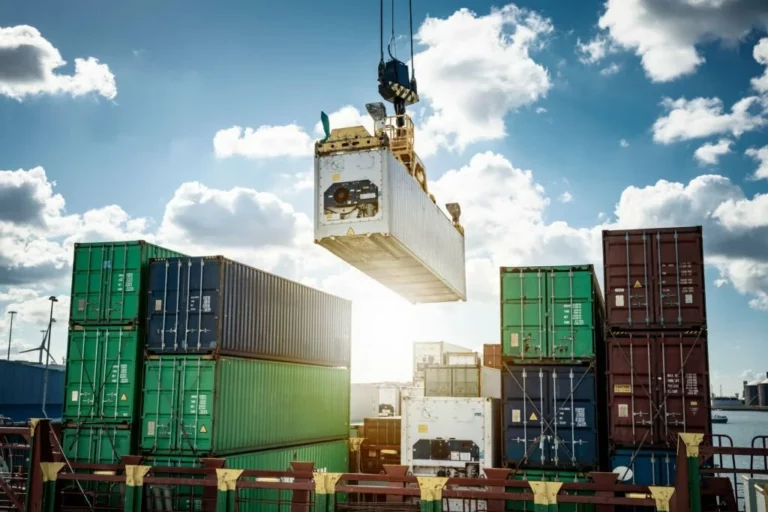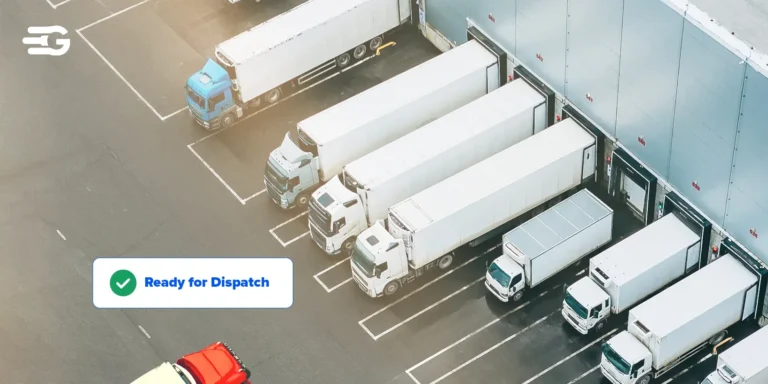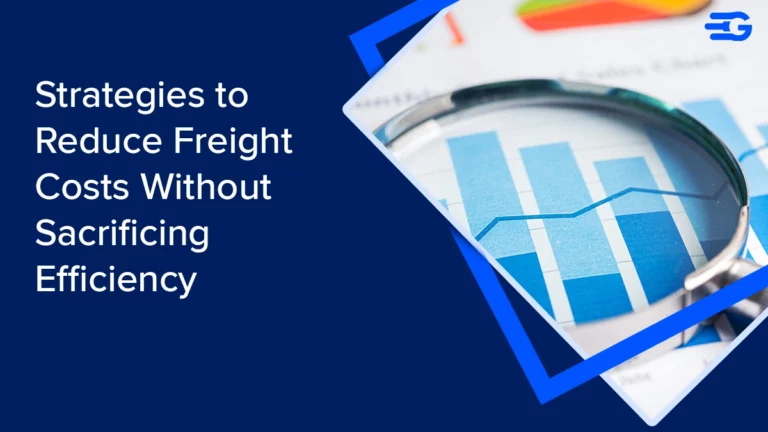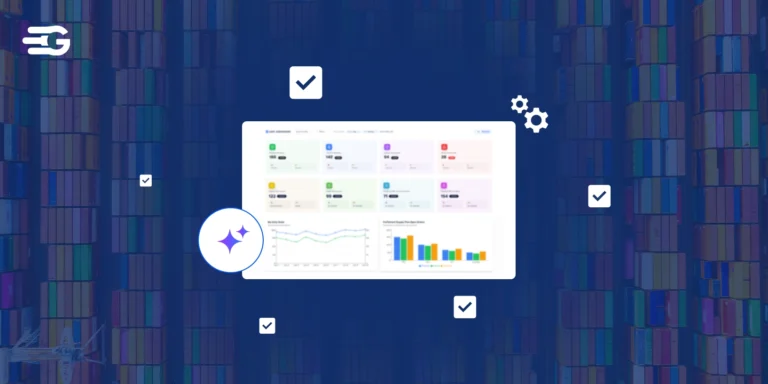The What and How of Logistics Route Optimization
Supply chain operation may involve many systems from the shipper and manufacturer’s point of view. But when we flip the lens to the customer, the delivery is the only physical touch point.
Delivery is what customers experience in terms of business supply chain operations. Despite the great condition, the brand reputation becomes bleak if the customer doesn’t receive goods/cargo on time or place.
Here’s where logistics route optimization comes in. Planning delivery routes strategically can maximize efficiency and minimize waste, not just finding the fastest distance between two points.
What is Logistics Route Optimization?
A supply chain comprises a complex web connecting warehouses, delivery points, and vehicles. Logistics route optimization is the process of untangling this web to find the most efficient flow for deliveries. It uses sophisticated algorithms and software to consider a multitude of factors, including:
- Distance: Of course, the total distance traveled matters. Less driving translates to lower fuel costs and reduced wear-and-tear on vehicles.
- Time: Every minute counts. Route optimization considers factors like traffic patterns, estimated travel times, and potential delays to ensure timely deliveries.
- Delivery Constraints: Some deliveries might have specific time windows for drop-off. Others might require specialized vehicles or drivers with certain certifications. Route optimization factors these constraints into the planning process.
- Vehicle Capacity: Not all trucks are created equal. Some have larger cargo capacities than others. Route optimization matches deliveries with the most suitable vehicles to avoid overloading or underutilizing them.
- Driver Schedules and Skills: Drivers have work hours and may have specific skill sets for handling certain types of cargo. Route optimization considers these factors to create efficient schedules and task assignments.
Agreed that they are integral but in specific, what are the areas that are directly affected by route optimization?
Efficiency and Cost Savings
A delivery truck weaving through traffic, making unnecessary stops, and burning excess fuel. Route optimization eliminates this chaos.
Logistics route optimization is not just about distance. It ensures efficient resource allocation by matching delivery demands with vehicle capacity. No more overloading smaller vehicles or underutilizing larger ones – every trip is optimized.
Traffic woes become a thing of the past. Route optimization takes traffic patterns and potential delays into account, allowing drivers to avoid congested areas and get back on track faster.
This translates to minimized driver time stuck in traffic and the ability to complete more deliveries per shift. The benefits keep rolling in even after the deliveries are complete.
Less driving translates to less wear and tear on vehicles, reducing maintenance costs and extending the lifespan of your fleet. In a nutshell, route optimization is a cost-cutting champion. It reduces operational expenses, improves your bottom line, and keeps you competitive in the market, all while ensuring your deliveries run smoothly.
Improved Delivery Times
Speed and reliability are paramount in today’s fast-paced world. Customers expect their deliveries to arrive on time, every time.
This software generates accurate estimated times of arrival (ETAs) by factoring in real traffic patterns and realistic travel times.
Route optimization goes beyond basic deliveries. It can prioritize deliveries with specific time windows, ensuring those critical items arrive on schedule and boosting customer trust. By avoiding congested areas and planning for potential roadblocks, route optimization helps drivers navigate the road more efficiently.
This translates to fewer delays and deliveries that arrive closer to their promised timeframes. Thus route optimization creates a reliable and efficient delivery process, turning happy customers into loyal ones.
Key Components of Effective Route Optimization
Real-Time Data and Analytics:
Route optimization with real-time data ensures your deliveries stay on track. This dynamic approach analyzes traffic conditions, weather events, and even accidents in real time, allowing the software to suggest the most efficient route every time.
Unexpected delays become a thing of the past. If an accident blocks a planned route, the software can instantly reroute drivers, minimizing delays and keeping you ahead of the curve. Proactive decision-making powered by real-time data is what keeps your deliveries on schedule and your customers happy.
Consideration of Delivery Constraints:
Delivery windows are a top priority, and the route optimization software factors them in to ensure drivers reach each stop precisely when promised. Vehicle capacity and load planning is another key player.
The software considers the size and limits of each truck or van, ensuring efficient loading and preventing overloading that could lead to fines or safety hazards. And because traffic is a fact of life, real-time data on congestion is fed into the system.
This allows the software to suggest alternate routes on the fly, minimizing the impact of traffic jams and keeping your deliveries on schedule.
The Synergy:
Real-time data and analytics work hand-in-hand with delivery constraint considerations. The software takes the planned route with its delivery windows and vehicle capacities and analyzes real-time data on traffic and other factors. This allows for constant adjustments, creating a dynamic and efficient route that adapts to the ever-changing environment. This synergy between data and constraints is what truly optimizes routes for efficiency, timeliness, and cost-effectiveness.
Benefits of Logistics Route Optimization
Logistics route optimization offers a multitude of advantages, streamlining operations and boosting your bottom line. Here’s a closer look at some key benefits:
Reduced Fuel Consumption
Every mile driven translates to fuel burned. Traditional route planning, with its static approach, often leads to inefficient paths with unnecessary backtracking or excessive idling. it calculates the most direct routes, eliminating unnecessary detours and keeping total distance traveled to a minimum as real-time data allows the software to steer drivers clear of congested areas, reducing idling and stop-and-go driving that eat away at fuel.
Besides, route optimization also tackles loading inefficiencies, considering vehicle capacities. This reduces strain on the engine and translates to better fuel economy across your entire fleet. In short, route optimization keeps your deliveries moving smoothly while saving you money on fuel costs.
Enhanced Resource Utilization
Route optimization helps drivers complete more deliveries in a shorter timeframe. This translates to increased productivity and the potential to handle a higher delivery volume without adding drivers. Route optimization ensures shorter routes mean less time spent, which also in turn leads to reduced driver fatigue and cost savings on vehicle maintenance, licensing, and fuel.
Increased Operational Flexibility
Dynamic route optimization constantly analyzes real-time data, allowing for on-the-fly route adjustments. If an accident blocks a planned route, the system can reroute drivers instantly, minimizing delays and ensuring timely deliveries. The essence of dynamic routing is to accommodate urgent orders while minimizing disruption to existing schedules.
Implementing Route Optimization with GoComet
GoComet equips you with powerful tools to streamline your logistics operations and unlock the full potential of route optimization.
Features of GoComet’s Route Optimization Tools
GoComet’s real-time traffic data integration ensures you avoid congestion and delays, keeping your deliveries on track. Speaking of staying on track, delivery window management lets you factor in specific timeframes for each stop during route planning.
But efficiency goes beyond routes. Vehicle capacity management optimizes loading by considering vehicle size and weight limits, preventing overloading and saving fuel.
GoComet doesn’t stop there; it analyzes past delivery data to identify trends, allowing you to continuously improve your strategies. To empower your drivers, a user-friendly mobile app provides them with real-time route updates, turn-by-turn navigation, and all the delivery information they need.
Integration with Existing Systems
For seamless operations, integrating GoComet’s route optimization tools with your existing logistics management systems (LMS) is crucial. This integration allows for seamless transfer of data between GoComet and your LMS eliminates manual data entry and reduces the risk of errors.
Further, it improves the visibility to foster a holistic view of your entire logistics operation, with real-time data on deliveries, drivers, and vehicles within a centralized platform and streamlines workflows.
Challenges in Route Optimization and How to Overcome Them
Even with its numerous benefits, route optimization isn’t without its challenges. Here’s a look at some common hurdles and how to overcome them:
Data Accuracy and Availability
The effectiveness of route optimization hinges on the quality of the data it ingests. Inaccurate or incomplete data can lead to inefficient routes and missed opportunities.
Data source validation from various sources like GPS devices, traffic feeds, and customer address reliability of the information. Further, maintaining consistent data formats across all systems avoids errors during data integration as well.
Handling Complex Delivery Networks
Large and intricate delivery networks, with numerous stops, varying delivery windows, and diverse vehicle types, can overwhelm traditional planning methods. Modern route optimization software utilizes sophisticated algorithms that can handle complex scenarios with multiple stops, constraints, and real-time adjustments.
The software allows you to set different delivery parameters and analyze various route options alongside the room to scale with your business. As your delivery network expands, the software can handle the increasing complexity without sacrificing efficiency.
Future Trends in Route Optimization
The future of route optimization is brimming with exciting possibilities driven by advancements in technology. Here’s a glimpse into what’s on the horizon:
AI and Machine Learning
Route optimization is getting a supercharge from AI and machine learning, taking it from data-driven to intelligent. Here’s the game changer: predictive analytics. AI crunches historical data and traffic patterns to anticipate future conditions, proactively optimizing routes for maximum efficiency.
Machine learning joins the party with self-learning algorithms that constantly improve. By analyzing past deliveries, the software identifies the best routes, assigns vehicles perfectly, and even picks up on driver behaviors that boost efficiency.
Furthermore, the future of delivery is here – autonomous vehicles. As these self-driving cars hit the road, route optimization will adapt to seamlessly integrate them into delivery networks. AI will be the mastermind behind these autonomous fleets, optimizing routes for both efficiency and safety.
IoT and Real-Time Tracking
The future of route optimization is brimming with intelligence and real-time awareness thanks to the Internet of Things (IoT) and real-time tracking. This allows for hyper-precise route adjustments, letting you proactively respond to anything unexpected that might arise.
Integration with smart city infrastructure and real-time traffic management systems means your route optimization software can leverage dynamic traffic light patterns and congestion data to plan even more efficient routes. And the benefits extend beyond your bottom line fostering transparency and visibility throughout the supply chain.
Case Studies: Successful Route Optimization with GoComet:
A leading plastics and rubber distributor, Polymers International, faced difficulties keeping tabs on their frequent global shipments. This resulted in poor customer service due to a lack of shipment status updates and limited visibility into their supply chain.
GoComet’s GoTrack solution provided a single platform for real-time shipment tracking. This automated system streamlined operations, reduced costs, and boosted customer satisfaction by 80% through improved communication on delivery timelines.
Conclusion: The Strategic Advantage of Route Optimization
In today’s competitive logistics landscape, efficiency is paramount. Route optimization emerges as a powerful tool, leveraging data and technology to transform deliveries.
Route optimization isn’t just about efficiency, it’s a win-win for both your business and your customers. By creating optimized routes, you slash costs through reduced fuel consumption, less driver overtime, and minimized wear-and-tear on vehicles.
Happy customers are key to success, and route optimization helps achieve that by ensuring on-time deliveries that meet promised windows. Real-time tracking keeps customers informed and in control, further enhancing their experience. But the benefits extend beyond happy customers.
Route optimization streamlines your entire operation. Drivers and vehicles become more productive, completing more deliveries per shift. Resources are utilized effectively, leading to a significant boost in overall logistics efficiency. And as your business scales, route optimization scales right along with you. These tools are designed to handle complex delivery networks with ease, so you can grow your operations without sacrificing efficiency.
Embrace the Future of Logistics
Route optimization is not just a trend; it’s a strategic advantage. By adopting these data-driven strategies, businesses can gain a significant edge in the competitive logistics landscape. GoComet stands ready to be your partner in this journey, providing the tools and expertise to optimize your routes, reduce costs, and elevate your customer service.
Don’t wait – unlock the power of route optimization and transform your logistics operations today.






